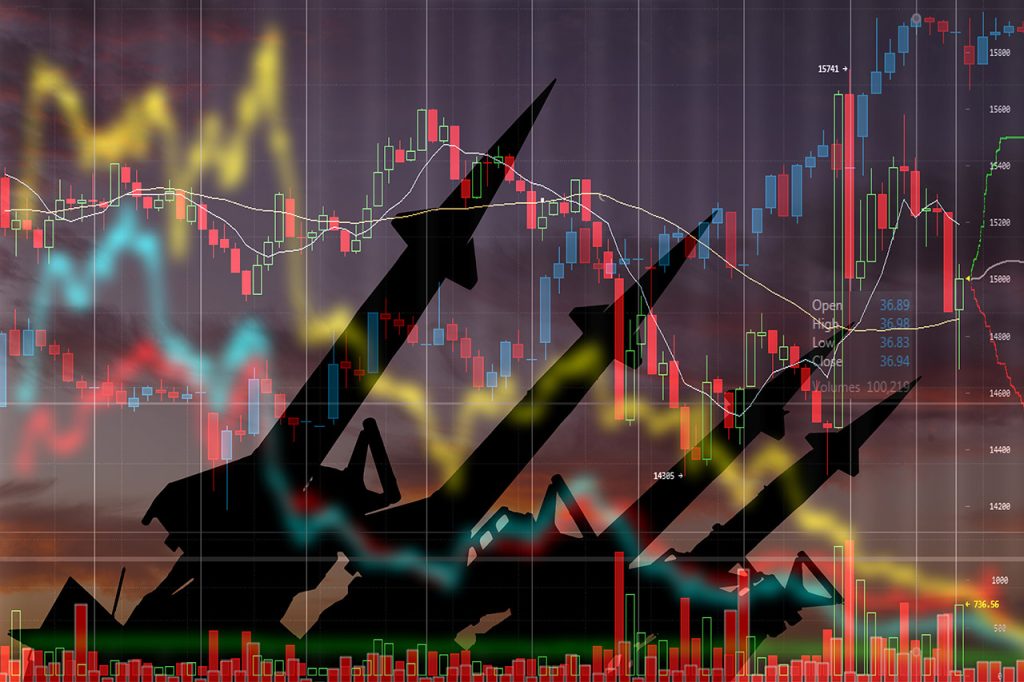Time certainly flies. Four whole years have passed since we published an article citing important arguments for the case on “Institutional Reporting” and the need to increase the pace of digitalisation towards supporting this segment of investing.
In the article, we talked about the overall institutional space and shining a light on how digital could help shape the future of investor communications across this category of investor. We continue to hold this belief despite much more focus being applied to retail distribution in more recent times. Why? We believe the institutional category remains disproportionately underserved and the stakes have increased somewhat beyond the general discussion of digitalisation. The arguments are no longer about just improving data processes or engaging investors to explore new areas of bettering communications – the industry itself is now exposed to market fundamentals not seen in over a decade and this is forcing the change that has been talked about for so long.
We believe that distribution, sales, marketing and client service are inextricably linked within an investment management organisation. Those firms that achieve close collaboration between these teams, thrive.
Changes in the Investment Management Industry
Trying to distil what has specifically changed in asset management in the last 4 years is not straightforward. One could argue that nothing changes too quickly in an industry where, compared to most others, fleet of foot is not something it is associated with.

Source: GettyImages
There are industry fundamentals at play here that may help to provide some explanation. The key one Is the actual science of investing. That has not changed much at all and shows little sign of doing so. The process has changed by virtue of regulation changes such as those brought about by MiFID or selection changes due to ESG considerations, but the raw science of stock selection and allocation remains arguably no different to what it was decades ago. Sure, there is much talk of machine learning and artificial intelligence supporting fund managers, but the reality is that these technologies remain way off being integrated into the mainstream process of investing. It is certainly beginning to play at the edges but being integrated into the fundamental process of investing is for the preserve of a relatively small number of boutique investment firms. Ask an active fund manager today as to what has changed in their selection “science” over the last decade, and they will likely say very little. Investing has not changed. So, what has?
Taking an alternative tack to this question leads to a different perspective. The general argument goes that the “market doesn’t lie”. On that basis, what has really changed across the board is share prices and therefore the valuations of asset managers. Most listed asset managers are trading at soggy, if not outright dire valuations. Many are down by more than 50% of their 2019/2020 highs. The exceptions, like Blackrock, are rare and they represent at outlier, now that they have established themselves as one of the kingpins of the industry. Their resilience can be explained through sheer scale and an ambitious leader in Larry Fink. He, single-handedly, has established himself and his firm as the flag-bearer of responsible investing amidst growing momentum on the net-zero cause. CEOs of asset managers are rarely seen – let alone heard – in mainstream media talking points. Larry Fink is changing that, and his firm’s relatively resilient stock price reflects it.

Larry Fink, CEO at Blackrock
Illustration: Tracie Ching | Source: www.fnlondon.com
With rising interest rates, unpredictable markets due to war and global instability, rising costs to beef up ESG processes, inflationary wage pressure and a talent deficit, it is no longer as easy as it once was being a CEO of an asset manager. It could take years for valuations to recover. It would not be surprising if many independents were inwardly hoping they are being eyeballed for acquisition to spare them the pain of the years ahead and having to do it alone.

Source: GettyImages
But the opportunity in grinding it out may be significant. Notwithstanding that we have long held the view, expressed in many of our previous blogs, about the need for asset managers to cut costs, we also wholeheartedly believe in the something even more basic required, and that’s the need to sell through better and more streamlined distribution. With depressed asset prices, it will not be lost on sales teams that larger mandates are required to achieve previously held revenue targets.
Take your client reporting and marketing to the next level
We believe that distribution, sales, marketing and client service are inextricably linked within an investment management organisation. Those firms that achieve close collaboration between these teams, thrive. Additionally, where firms have more integrated and – ironically, leaner sales and marketing functions, we also see better performance. This is evidenced through the success of firms such as Nordea AM, which has demonstrated top quartile net AUM growth in recent times.

Source: www.bloomberg.com
The intersection with what we provide has never been timelier than it is now and here’s 3 reasons why:
- An investor communication can no longer be just a traditional client report, packed to the brim with positions and valuations. It now needs to be a story, full of narrative, pictures, and a tripling of measures and statistics illustrated through data-driven iconography, largely driven by investor demand for better explained responsible investing. The traditional “client report” with fall back in the overall reporting towards the appendices. Important as they will always remain, they are being demoted in favour of the story.
- Clients want access to their reporting online. It is no longer an option and the definition of “online” has also changed. The question around online reporting is posed in nearly every RFP issued by an institutional investor. It used to be that this requirement is sufficiently covered by having an on-line secure document portal for distributing reports. This is no longer the ask. Investors – and importantly, also their investment consultants – want an interactive portal, where they can download data, receive intra-period updates, and be informed of important regulatory matters.
- Investors have more choices than ever before and are condensing who they invite to RFPs. Having pre-RFP sales and marketing materials readily on-hand are increasing chances of being invited and ultimately winning new business. The imperative must be to improve the quality and timeliness of producing compelling sales materials.
Investment managers have an undisputed cost efficiency problem. But it can be argued they always have and just been poor at dealing with it. They are now faced with another problem given the market cycle we are in. The new, more burning issue is one of sales. To sell more, especially in the current market conditions, asset managers need to improve the way they communicate their message pre- and post-sale. The incumbent reporting technologies they use today are aging and do not allow for the personalisation and storytelling needed in the desktop tools such as Microsoft Office and Adobe that most teams use. This reduces the ability to introduce new products & strategies, target more specific institutional cohorts and provide vital portfolio information at the right time. The reason to rethink client reporting in through better technology has arrived.
If you’d like to learn more, get in touch today. Talk to our team and arrange a demonstration of how our tools and services can add value to your digital transformation.



